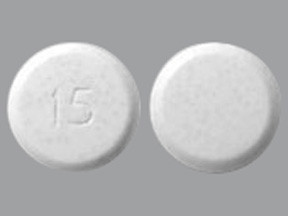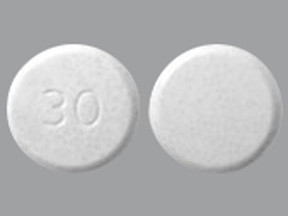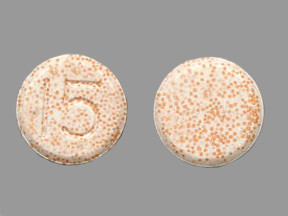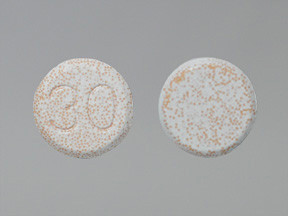LANSOPRAZOLE DELAYED-RELEASE DISINTEGRATING TABLET - ORAL
PHONETIC PRONUNCIATION: (lan-SO-pruh-zole)
COMMON BRAND NAME(S): Prevacid
GENERIC NAME(S): lansoprazole
Uses
USES: Lansoprazole is used to treat certain stomach and esophagus problems (such as acid reflux, ulcers). It works by decreasing the amount of acid your stomach makes. It relieves symptoms such as heartburn, difficulty swallowing, and persistent cough. This medication helps heal acid damage to the stomach and esophagus, helps prevent ulcers, and may help prevent cancer of the esophagus. Lansoprazole belongs to a class of drugs known as proton pump inhibitors (PPIs).
How to use LANSOPRAZOLE DELAYED-RELEASE DISINTEGRATING TABLET - ORAL
HOW TO USE: Read the Medication Guide and the Patient Information Leaflet if available from your pharmacist before you start taking lansoprazole and each time you get a refill. If you have any questions, ask your doctor or pharmacist. Take this medication by mouth as directed by your doctor, usually once daily, before a meal. Dosage and length of treatment are based on your medical condition and response to treatment. Handle the tablet with dry hands. Place the tablet on your tongue and let it disintegrate. This takes less than 1 minute. Swallow the remaining particles with or without water. Do not crush, chew, or break the tablet or particles. If you have trouble swallowing the tablet, you may dissolve it in water and take the mixture by mouth through an oral syringe. Place a tablet in an oral syringe and draw up the correct amount of water for your dose (4 milliliters for a 15-milligram tablet, or 10 milliliters for a 30-milligram tablet) into the syringe. Shake the syringe gently to break apart the tablet, then swallow the liquid within 15 minutes. To make sure that you have taken the entire dose, refill the syringe with water (2 milliliters for the 15-milligram tablet, or 5 milliliters for the 30-milligram tablet), shake again, and swallow all of the liquid. Do not prepare the liquid mixture ahead of time for later use. Doing so may destroy the drug. If you are giving this medication through a tube into the stomach (nasogastric tube), ask your health care professional for detailed instructions on how to properly mix and give it. If needed, antacids may be taken along with this medication. If you are also taking sucralfate, take lansoprazole at least 30 minutes before sucralfate. Use this medication regularly to get the most benefit from it. To help you remember, take it at the same time each day. Continue to take this medication for the prescribed length of treatment even if you are feeling better. Tell your doctor if your condition persists or worsens. The risk of side effects goes up over time. Ask your doctor how long you should take this medication.
Side Effects
Precautions
Interactions
Overdose
Images
Reviews
Faq for LANSOPRAZOLE DELAYED-RELEASE DISINTEGRATING TABLET - ORAL
Lansoprazole delayed-release disintegrating tablet is used to treat certain stomach and esophagus problems, such as acid reflux, gastroesophageal reflux disease (GERD), and stomach ulcers.
You should follow the instructions given by your doctor or pharmacist. Generally, it is recommended to take the tablet on an empty stomach at least 1 hour before a meal, usually once daily. It is important not to crush or chew the tablet; instead, place it on your tongue and let it disintegrate before swallowing it.
Common side effects may include headache, abdominal pain, diarrhea, nausea, and dizziness. Serious side effects are rare but may include severe allergic reactions, liver problems, and low magnesium levels. It is important to seek immediate medical attention if you experience any severe side effects.
Before taking any other medications, it is important to inform your doctor or pharmacist about all the medicines you are currently taking, including prescription, over-the-counter, and herbal products. Some medications may interact with Lansoprazole, so it is important to check for potential drug interactions.
The time it takes for Lansoprazole to start working may vary from person to person. However, it may take up to a few days or weeks for the medication to have its full effect. It is important to continue taking the medication as prescribed even if you feel better.
Disclaimer
IMPORTANT: HOW TO USE THIS INFORMATION: This is a summary and does NOT have all possible information about this product. This information does not assure that this product is safe, effective, or appropriate for you. This information is not individual medical advice and does not substitute for the advice of your health care professional. Always ask your health care professional for complete information about this product and your specific health needs.




No Reviews Yet